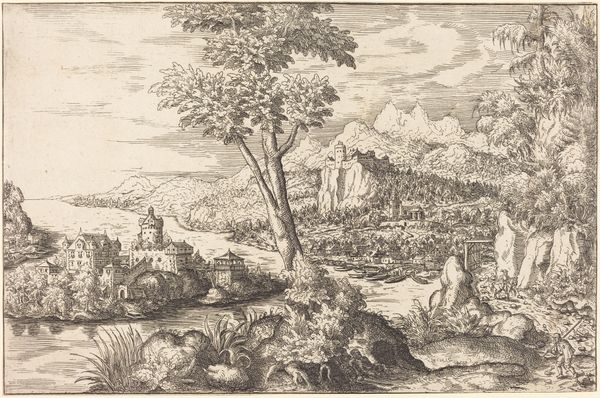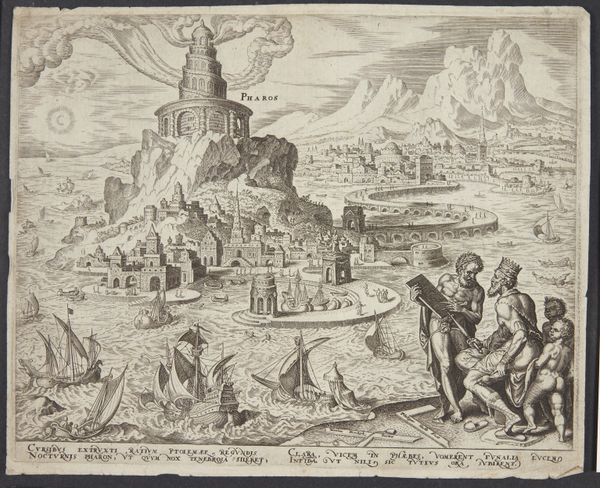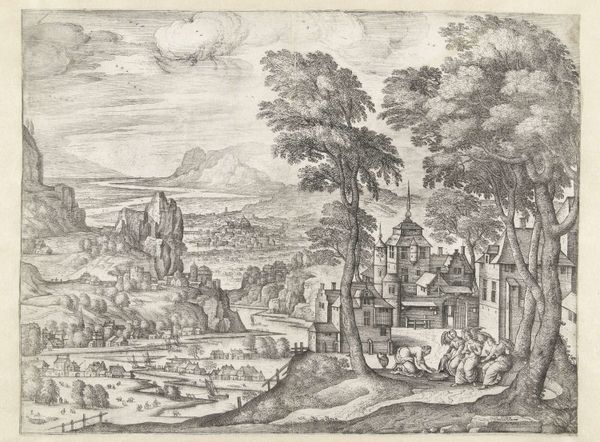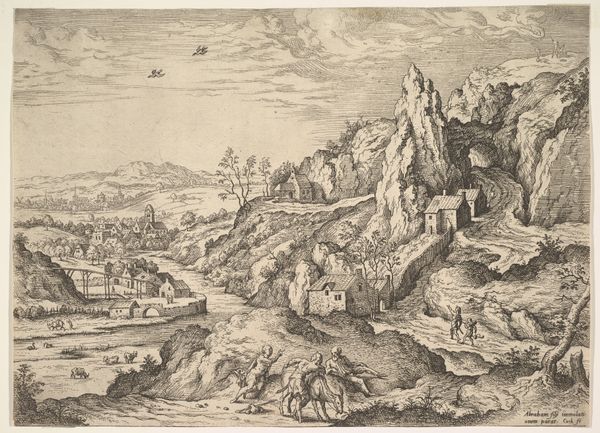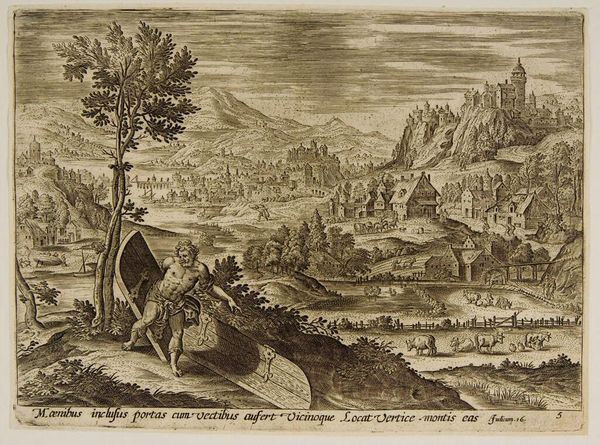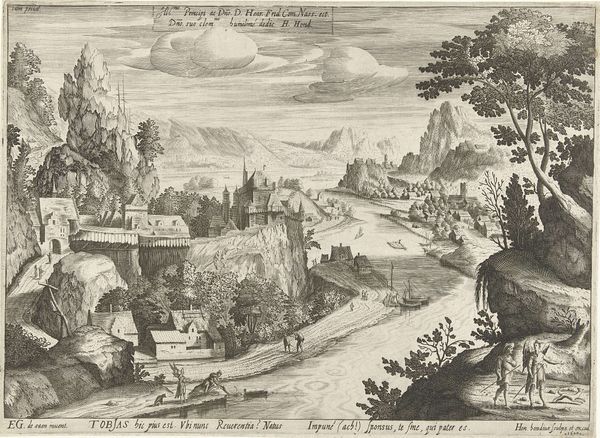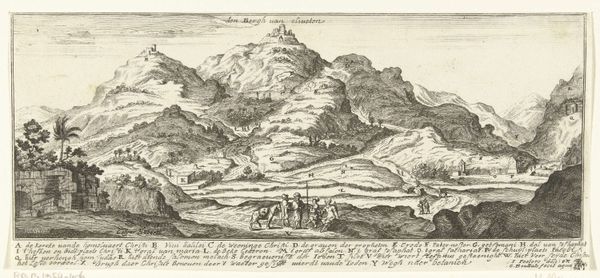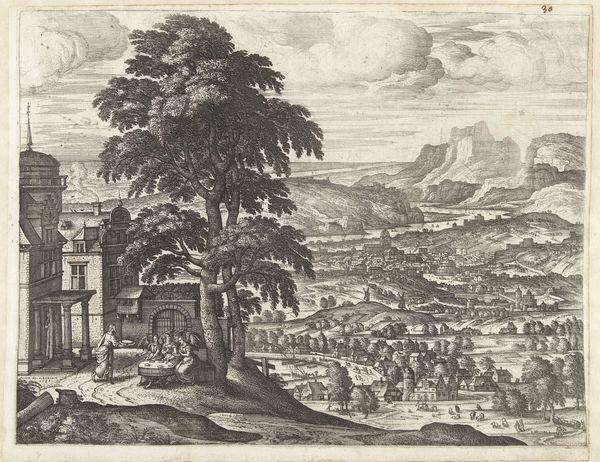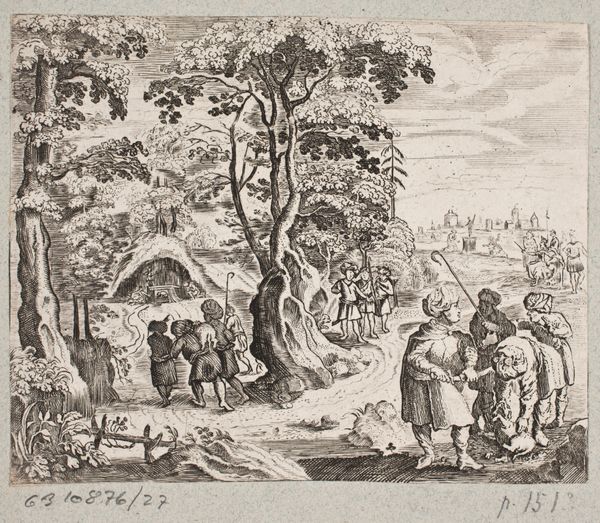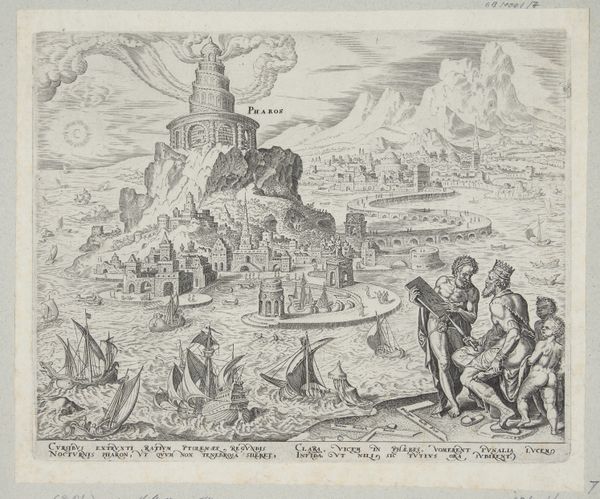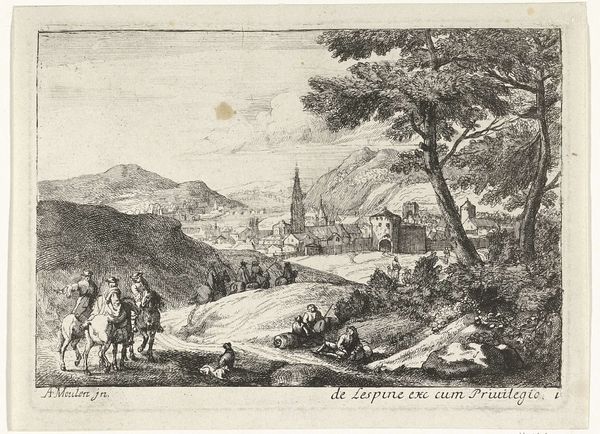
print, engraving
#
baroque
# print
#
landscape
#
cityscape
#
engraving
Dimensions: 99 mm (height) x 141 mm (width) (bladmaal)
Curator: This captivating engraving from 1647, titled "Soltanieh i Iran," is from an anonymous artist. Its landscape style, a bustling cityscape tucked beneath imposing mountains, speaks of far-off places and curious journeys. Editor: My first impression? It's so… linear. All these meticulous, etched lines that create this image of a baroque wonderland and a sort of ordered chaos at the same time. You can almost feel the scratch of the burin on the copper plate. Curator: Exactly! It's like catching a fleeting dream of a place you’ve never seen. The choice of engraving underscores this sense of capturing a place; printmaking democratizes the view and spreads it far. These clean, consistent lines seem both pragmatic and magical, simultaneously mapping reality and transforming it. Editor: Absolutely, it also highlights the sheer labor and the painstaking craftsmanship that went into producing these prints. Engraving wasn't some fleeting artistic moment. Each impression was produced individually with pressure against paper, each being identical, of course, emphasizing distribution. Curator: Thinking about these traveling impressions, there is also an element of staging the ‘Orient,’ which was in great demand at the time, and which very few would see otherwise. It has a dreamlike quality. The artist seems more concerned with capturing a feeling or an essence of “Soltanieh,” than providing an accurate architectural rendering. The people almost seem like actors on a stage. Editor: The costumes really emphasize this impression; even those simple hats. And that raises questions for me. How was the dissemination of imagery influenced by production methods in the 17th century? It looks simple but it actually asks us to consider the global economy then in action, where the exotic other and its distribution has its value based on its scarcity. Curator: The very limitations of engraving—the reliance on line, on the black-and-white contrast, these features push the viewer to imagine more of what isn't visibly expressed here. And I think there’s beauty in that interpretive space. What do you make of those towers on the right, as opposed to, say, that stepped architectural structure closer to the image center? Editor: Those looming stacks hint at this region’s extraction; the wealth derived, and perhaps the pollution expelled? One aspect is the material origin of Soltanieh as we look at its engraving and paper here centuries later. That contrast between what might be a minaret versus some structure relating to manufacturing creates the tension in the cityscape overall. Curator: You know, examining the social fabric in addition to all of those very tactile components, brings the picture even more to life. The material shapes our interpretation; that’s lovely. Editor: Indeed. And what appears at first glance to be a quaint vista reveals this wider narrative.
Comments
No comments
Be the first to comment and join the conversation on the ultimate creative platform.
